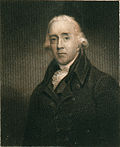File:Duckworth's Action off San Domingo, 6 February 1806.jpg
Appearance

Size of this preview: 800 × 529 pixels. Other resolutions: 320 × 211 pixels | 640 × 423 pixels | 946 × 625 pixels.
Original file (946 × 625 pixels, file size: 259 KB, MIME type: image/jpeg)
File history
Click on a date/time to view the file as it appeared at that time.
| Date/Time | Thumbnail | Dimensions | User | Comment | |
|---|---|---|---|---|---|
| current | 10:08, 18 May 2012 |  | 946 × 625 (259 KB) | Rama | higher resolution |
| 21:49, 3 February 2008 |  | 560 × 367 (41 KB) | Benea~commonswiki | {{Information |Description=Following Nelson's victory at Trafalgar in 1805, Sir John Duckworth left the blockade of Cadiz and pursued a French squadron to the Caribbean, where he defeated it off San Domingo on the 6 February 1806. With six ships of the li |
File usage
The following 7 pages use this file:
Global file usage
The following other wikis use this file:
- Usage on bg.wikipedia.org
- Usage on de.wikipedia.org
- Usage on es.wikipedia.org
- Usage on fa.wikipedia.org
- Usage on fi.wikipedia.org
- Usage on fr.wikipedia.org
- HMS Agamemnon (1781)
- Classe Commerce de Marseille
- Impérial (1803)
- Pierre Lefort
- Utilisateur:Skiff/A illustrer
- Frederick Wentworth
- Classe Duke (vaisseau de ligne)
- HMS Superb (1798)
- Classe Pompée
- Wikipédia:Lumière sur/Février 2016
- Wikipédia:Lumière sur/HMS Agamemnon (1781)
- Wikipédia:RAW/2016-04-03
- Impérial (1811)
- Liste des navires militaires français construits à Brest
- Usage on he.wikipedia.org
- Usage on it.wikipedia.org
- Usage on pl.wikipedia.org
- Usage on pt.wikipedia.org
- Usage on ru.wikipedia.org
- Usage on www.wikidata.org




